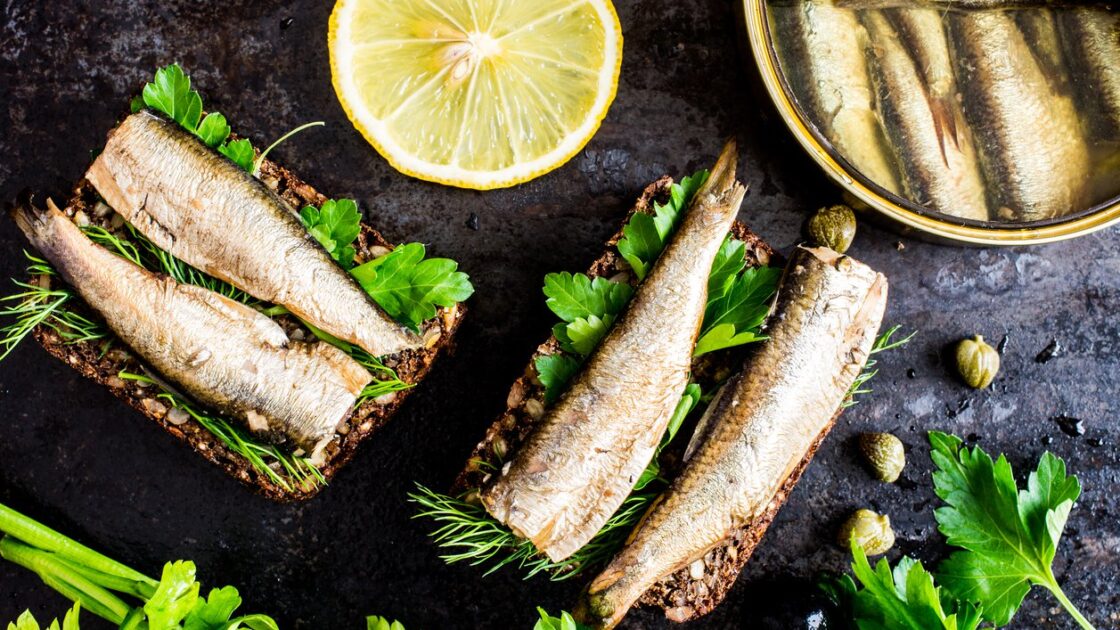Are You Eating Sardines Yet? How (and Why) to Eat the Little Silver Fish

What comes to mind when you think about sardines? Crammed into cans and featuring a potent aroma, sardines aren’t the flashy superstars of the seafood world. But maybe they should be – and maybe you should give these little fish another chance.
What Exactly are Sardines, Anyway?
Named after the Italian island of Sardinia, the word sardine actually refers to more than 20 different varieties of small, saltwater fish. With soft, easy-to-eat bones and oily flesh, these silver fish are in the herring family (Clupeidae) and may be known as pilchards in other parts of the world.
Legend has it that eating canned sardines was first famous by Napoleon, and the industry’s heyday brought to life Monterey Bay’s famous Cannery Row. Although their popularity has declined since the 1950s, sardines are making a comeback.
Superfood Stats: Nutrients Packed in Like… Sardines
Packed with nutrients, sardines are one of the world’s most concentrated sources of the omega-3 essential fatty acids DHA and EPA. One serving of sardines also provides 338 percent of the daily recommended value of vitamin B12. Sardines are also a great source of protein, selenium, vitamin D, calcium, phosphorus, and potassium.
What About Mercury Contamination?
Wee little sardines are at the bottom of the ocean’s food chain; they mature quickly and never grow very big. All this means that they are much lower in mercury, PCB, dioxane, and other toxins than other fish such as salmon or tuna.
Are They Sustainable?
Pacific sardines are ranked as a “Best Choice” on the Monterey Bay Aquarium’s Seafood Watch list. Atlantic sardines are to be avoided.
Let’s Be Real: I Can’t Stand the Smell
Yes, sardines smell fishy. But so do other fish – including fan favorites like tuna and salmon. Try out sardines and you will find that the aroma isn’t quite as bad as you think.
How Do I Eat Them?
Fresh sardines are the best, but they perish very quickly and are quite difficult to find unless you live on a coast. If you can find fresh sardines, choose firm, shiny fish that have bright eyes and smell fresh – and eat them as soon as possible.
When you can’t find fresh sardines, canned sardines are the way to go. They require virtually no preparation and can be stored a long time. Opt for Pacific Sardines that are packed in water or olive oil.
Eat sardines straight out of the can, or get creative and try out these ideas:
- Over brown rice with Sriracha
- Sprinkled with lemon juice on crackers
- Chopped in a fresh green salad
- On toast with a dollop of sour cream or plain yogurt
- With a hard-boiled egg and malt vinegar
- On tomato slices, sprinkled with cracked pepper
- Mashed with hummus and served with peppers on pita chips
- Sliced and served on cheese or veggie pizza
- Sautéed with garlic and onion, served with pasta
- With half an avocado, sprinkled with lime juice
- Mashed with mustard and served on rye bread
Related on Organic Authority
Omega-3 Fatty Acids: Flax vs. Fish
Sriracha Obsession? Science Explains Why You Have Hot Sauce Cravings (Video)
Our Tuna Addiction: Is Sustainable Tuna a White Whale?

